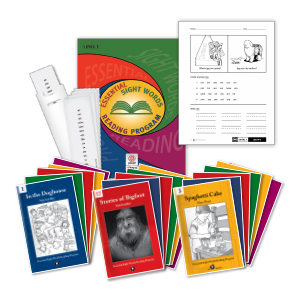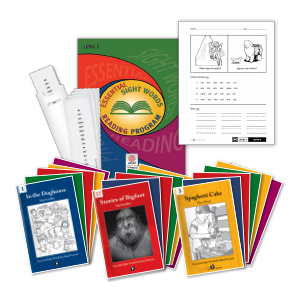
Essential Reading Material

**Exploring the Impact and Growth of Black Girls in Art Spaces**
Founded by Kaci Merriwether-Hawkins, Black Girls in Art Spaces (BGIAS) has flourished into an empowering platform for Black women and girls in the art community. The initiative started in October 2022 with its first event at the Daisha Board Gallery in Dallas, aimed at creating safe, welcoming environments in art spaces traditionally perceived as exclusive or unwelcoming to Black women. Since then, the organization has rapidly expanded its reach across the United States and internationally, conducting meetups in Seoul, London, and Nairobi. Driven by the power of social media platforms like Instagram and TikTok, BGIAS taps into the collective enthusiasm for arts and culture, fostering a community steeped in creativity and mutual support. Each meetup, tailored by local participants, serves as a unique gathering point for sharing art and cultural experiences, demonstrating the profound significance of inclusive spaces in the art world.
**The Essential Role of the Traditional Review**
In modern journalism, the value of the written review remains a topic of deliberation. Richard Brody of The New Yorker highlights that while diverse media formats like videos, essays, and festival roundups are vital, they find their roots in thorough, individual critique. By engaging deeply with art, be it movies, plays, or music, critics can transcend superficial chitchat and provide substance, offering readers an immersive, personal connection to the works evaluated. Criticism becomes an emotive exchange between a critic and their audience, fostering community through shared insights and emotional resonance. Through criticism’s subjective lens, readers may find reflections of their own experiences and feelings, enriching their engagement with art.
**Updating New York’s Subway Map**
Sean C. Suchara examines the evolution of NYC’s subway map, emphasizing the complex attachment to its functional past despite numerous changes. Originally shaped by cartographers like John Tauranac and designers such as Michael Hertz Associates, the 1979 map gradually transformed—often criticized but nostalgically held dear. Despite its evolving palette and layout in subsequent editions, and losing some valuable elements like the service guide, the map remains a fixture of New York’s identity. Suchara attributes this emotional connection to its blend of historical grit and evolving urban narratives, reflecting a city forever in flux.
**The Tavolette: Art and Salvation**
During the Renaissance, the use of “tavolette” paintings in executions served as a spiritual conduit for the condemned, as Amelia Soth reveals. Such religious imagery was designed to evoke Christ’s life in the final moments for those sentenced to death, offering a path to salvation. This practice highlights the profound role art played in historical religious and judicial rituals, offering comfort and hope in times of despair.
**Eddie Palmieri’s Legacy in Salsa**
Ernesto Lechner reflects on the legacy of the legendary salsa pianist Eddie Palmieri, who recently passed away at 88. Born in 1936 to Puerto Rican parents in NYC, Palmieri stood out for his experimental approach to salsa, diverging from traditional methods embraced by his brother, Charlie. Over decades, Eddie’s innovative style, including the use of a double trombone lineup, significantly influenced the salsa music scene. His repertoire, marked by dynamic compositions and collaborations with vocal talents like Ismael Quintana, established him as a transformative figure in Latin music, forever altering its course.
**The Politics of Shade in Urban America**
In “The New Republic,” Piper French reviews the cultural and climatic implications of shade as a public resource in the United States. As architects and urban planners historically prioritized sunlight and modernity, fundamental communal aspects like shade saw diminished importance. These shifts, compounded by air conditioning, fostered urban environments detached from their natural surroundings. Today, America’s reliance on artificial cooling illustrates a broader resistance to communal spaces, challenging the balance between convenience and sustainability.
**Rashid Khalidi’s Stand Against Political Pressure**
Palestinian historian Rashid Khalidi’s recent decision to cancel his classes at Columbia underscores academia’s vulnerability to political influence. As Columbia settles a significant lawsuit with the federal government following accusations related to campus antisemitism, Khalidi’s actions illuminate the broader discourse on academic freedom and institutional autonomy in politically charged climates.
**Reddit’s Evolving Role in Information Consumption**
As traditional online platforms falter, Reddit emerges as a vital hub for authentic content and discussions, John Herrman explains in Intelligencer. With AI using Reddit’s vast and varied datasets, the platform balances its influence against challenges posed by AI content. Users, attracted by genuine interactions, rely on Reddit for reliable knowledge amid increasing online noise, inevitably impacting how digital communities communicate and validate information.
**Jinkx Monsoon and Cultural Commentary**
In a blend of humor and insight, viral TikTok engagements spotlight Jinkx Monsoon as they navigate cultural conversions and self-expression, illustrating online platforms’ pervasive impact on everyday discourse. Social media not only elevates individual voices but also serves as